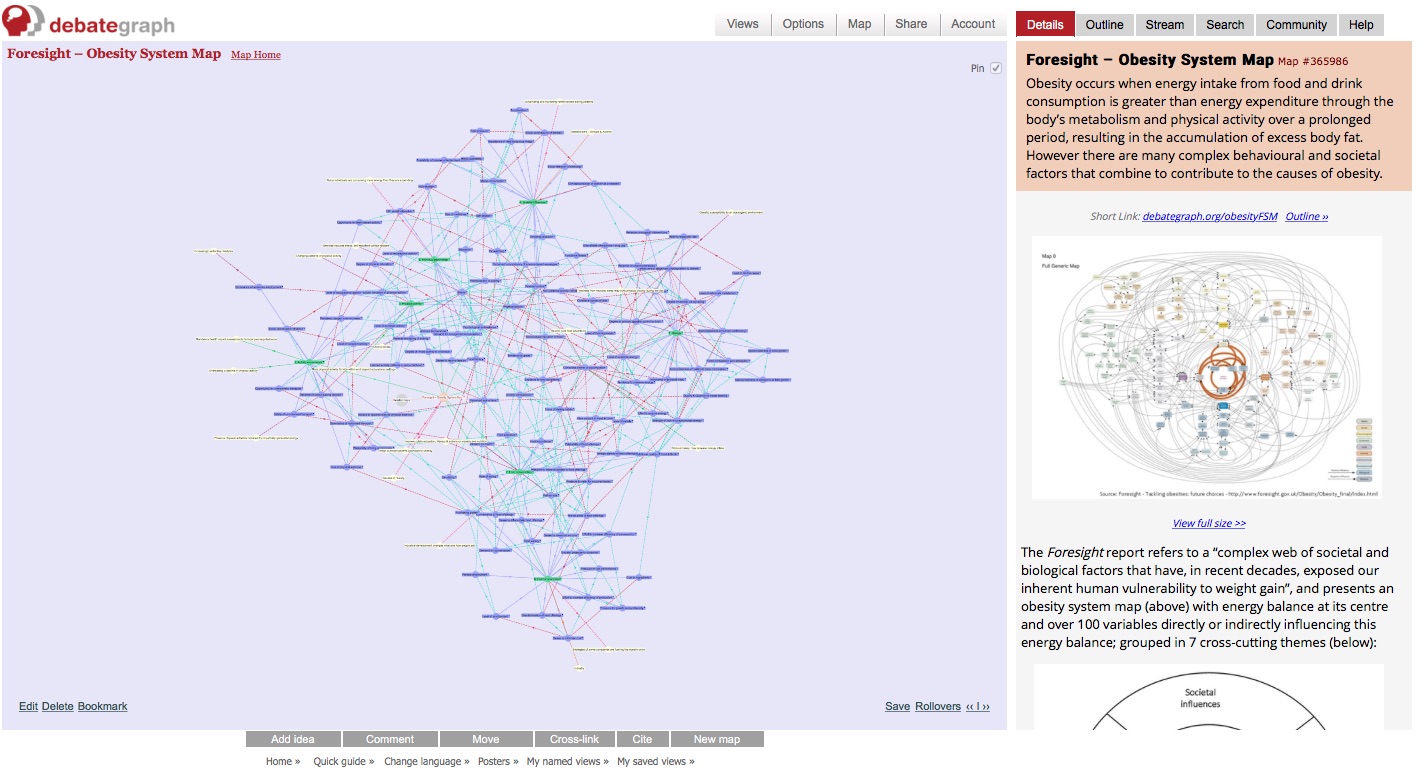What is hard thinking? Thinking that involves lots of ideas, lots of connections, lots of possible responses to various points and discussion around those points, perhaps internally if you are a single person or perhaps among a group of people.
I contend that this is what DebateGraph helps us to do more easily. And we need a lot of hard thinking now, particularly collaboratively, because of the enormous risks and challenges we face (see "Our World Today.")
Chronological thinking (books, reports, blogs, social media) is not sufficient to help us, because it's almost impossible to get an overview of what we are thinking about; we try to build maps in our heads and once we get beyond a few points, a few reasons, a few connections, most of us struggle to keep those maps going.
I contend that DebateGraph allows us to not only replicate those maps easily on a computer screen but go far beyond them, making "collaborative deep thinking" possible in a way that may be wholly new. What are the reasons we need this now? We have run out of time (see "Our World Today.")
First, spatially organized thinking on a computer screen (which is what DebateGraph facilitates) allows us to organize the landscape we are trying to think about. Second, DebateGraph then layers in tools for discussing that thinking, whether with yourself, or with your group if you're part of a team.
Use the Views menu to explore the different views of its maps DebateGraph offers.

This page in Graph > Explorer, Focus View

A map in zoomable Graph > Explorer, All View
Why learn a spatially-organized tool? Because the chronological tools we have used so far haven't been effective enough and we have run out of time.
See also "Conference Reporting and Engagement."
April 2017